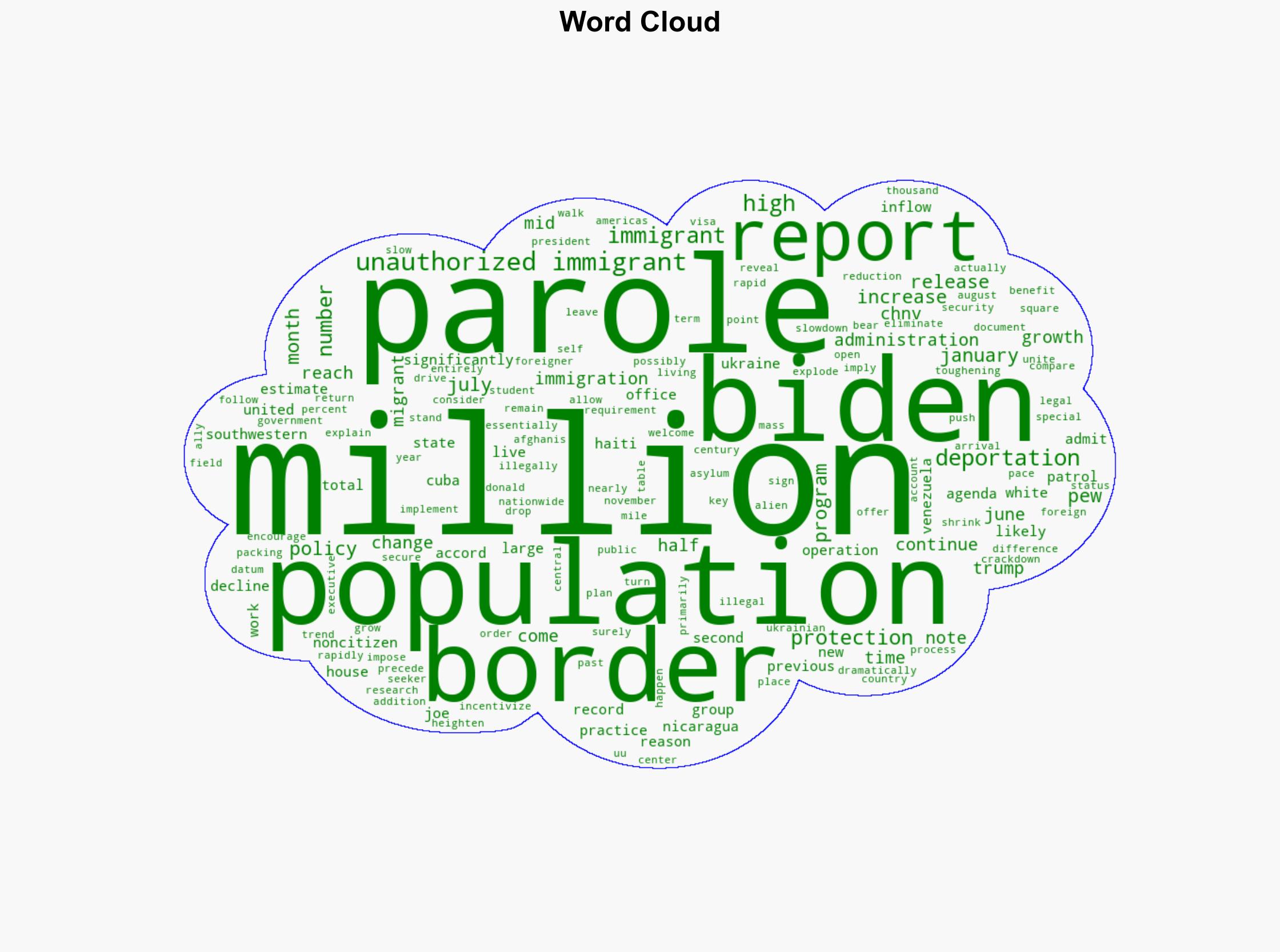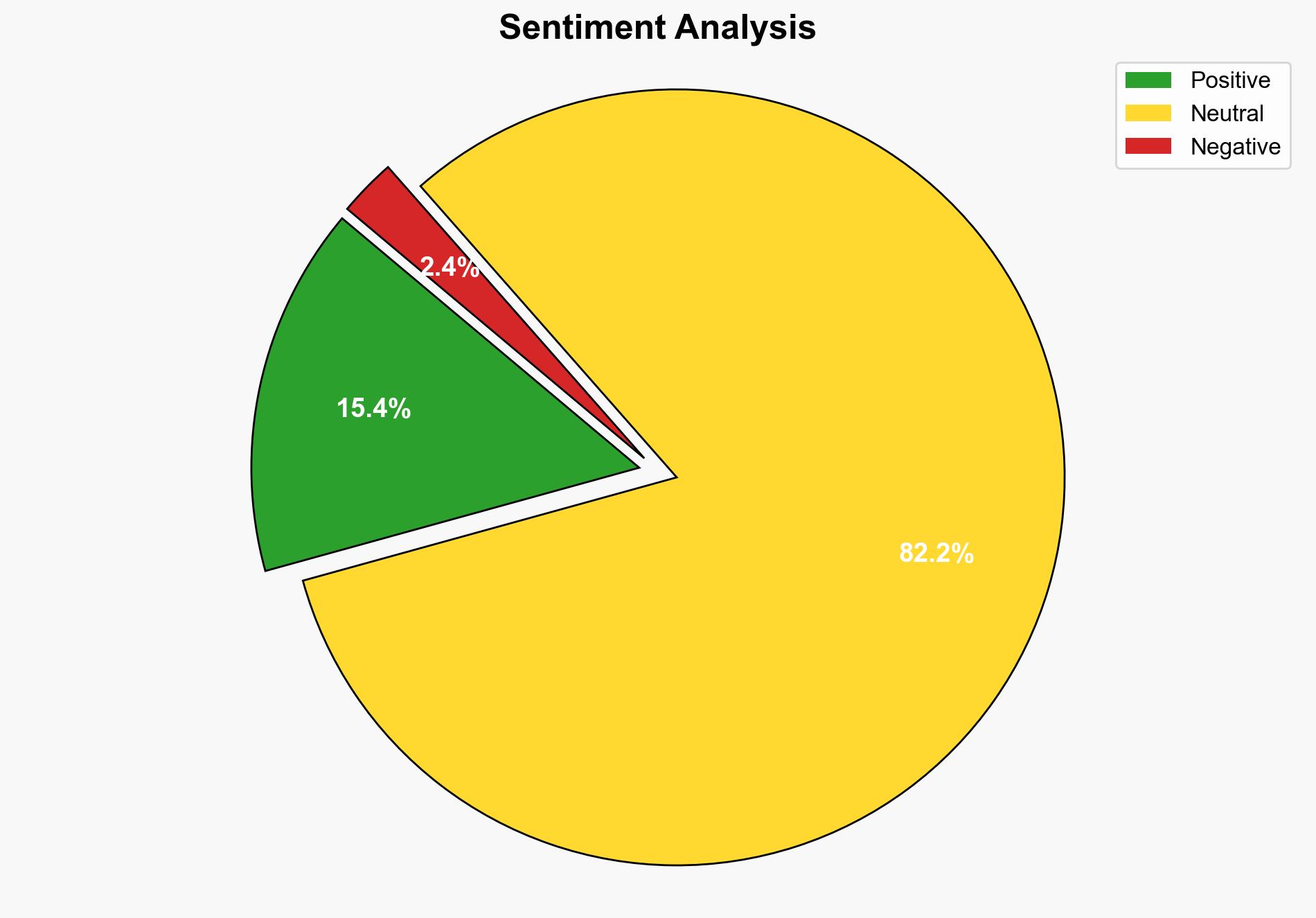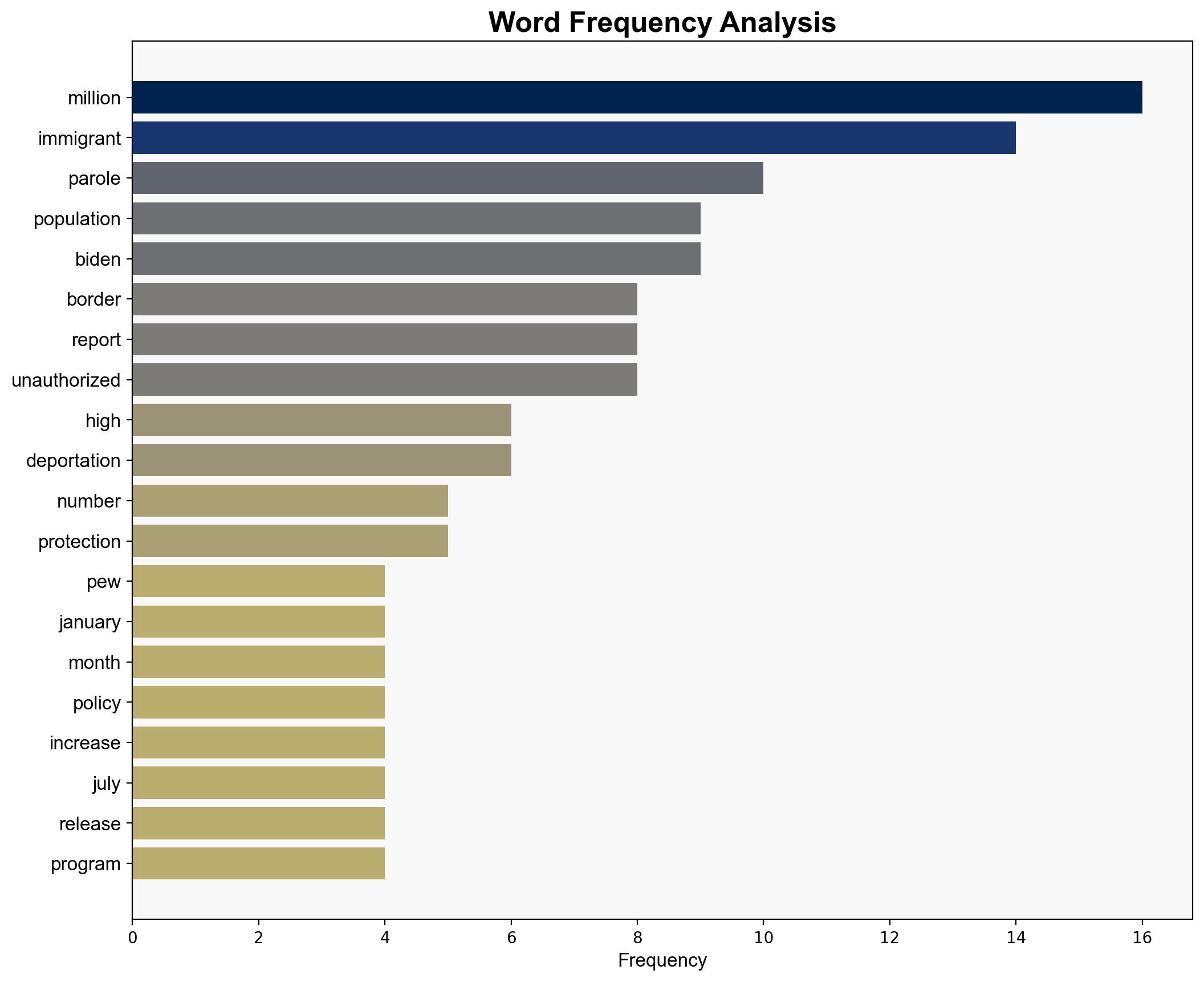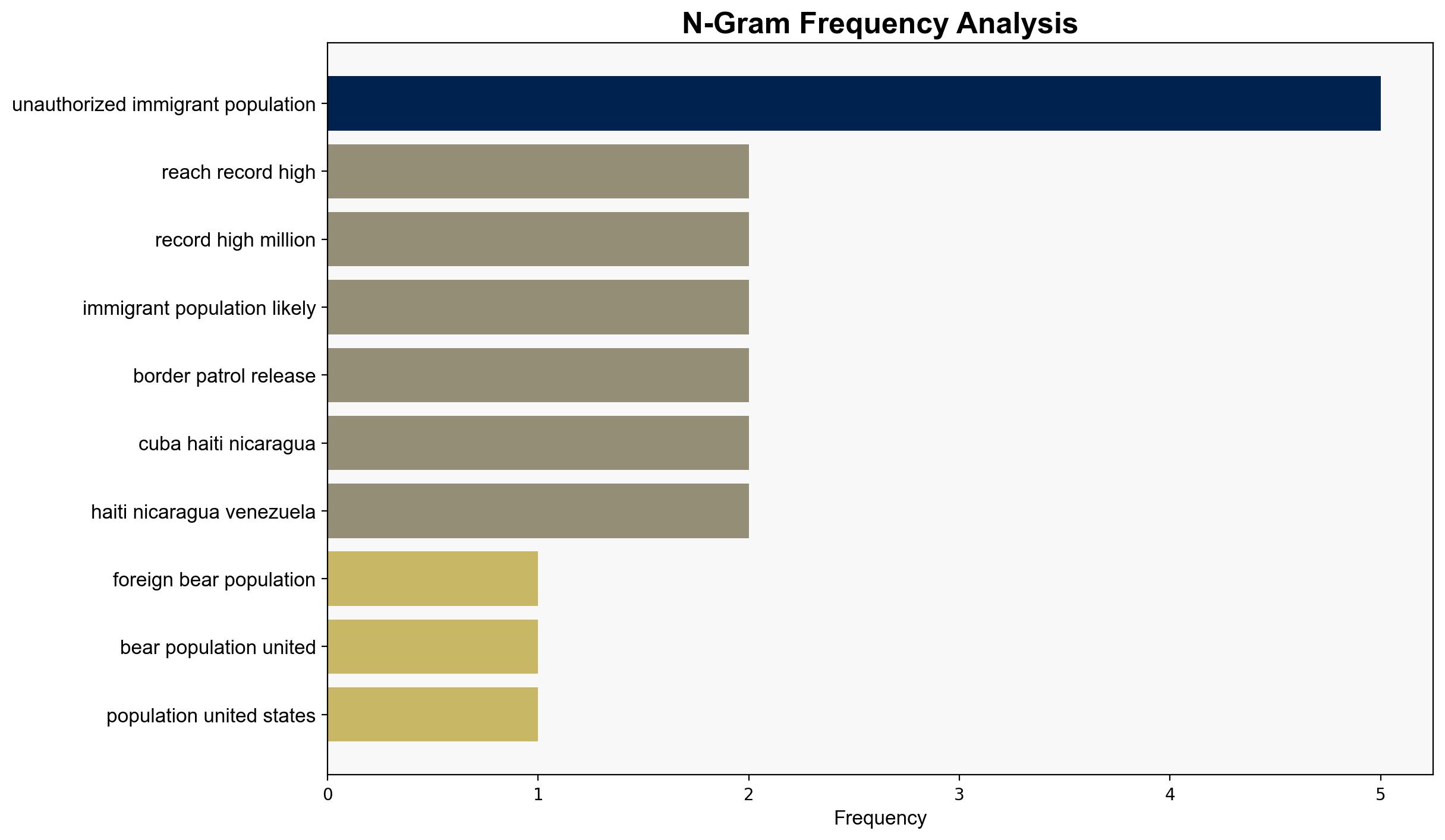Pew Research Foreign-born population in US declines for first time since the 60s – Wnd.com
Published on: 2025-08-22
Intelligence Report: Pew Research Foreign-born population in US declines for first time since the 60s – Wnd.com
1. BLUF (Bottom Line Up Front)
The analysis suggests two primary hypotheses regarding the reported decline in the foreign-born population in the U.S. The hypothesis that the decline is primarily due to policy changes under the Biden administration is better supported by the data. Confidence level is moderate due to potential data inconsistencies and political biases in reporting. Recommended action includes monitoring immigration policy impacts and preparing for potential shifts in immigration trends.
2. Competing Hypotheses
– **Hypothesis 1**: The decline in the foreign-born population is primarily due to policy changes under the Biden administration, including increased deportations and stricter border controls.
– **Hypothesis 2**: The decline is a temporary fluctuation influenced by external factors such as global economic conditions and the COVID-19 pandemic, rather than a direct result of U.S. policy changes.
Using ACH 2.0, Hypothesis 1 is better supported by the structured analysis, as the source text highlights specific policy changes and their timing correlating with the reported decline.
3. Key Assumptions and Red Flags
– **Assumptions**: Hypothesis 1 assumes that policy changes are effectively enforced and have a direct impact on immigration numbers. Hypothesis 2 assumes external factors have a significant influence on immigration trends.
– **Red Flags**: Potential bias in reporting, as the source may have political motivations. Inconsistencies in data reporting and lack of clarity on the methodology used by Pew Research.
4. Implications and Strategic Risks
– **Economic Impact**: A decline in the foreign-born population could affect labor markets, particularly in sectors reliant on immigrant labor.
– **Geopolitical Risks**: Changes in immigration policy may strain diplomatic relations with neighboring countries.
– **Social Dynamics**: Shifts in immigration trends could influence domestic social and political climates, potentially leading to increased polarization.
5. Recommendations and Outlook
- Monitor ongoing immigration policy changes and their impacts on population trends.
- Engage in diplomatic dialogues with countries affected by U.S. immigration policies.
- Scenario Projections:
- Best Case: Stabilization of immigration trends with minimal economic disruption.
- Worst Case: Significant labor shortages and increased geopolitical tensions.
- Most Likely: Continued fluctuations in immigration numbers with gradual policy adjustments.
6. Key Individuals and Entities
– Joe Biden
– Donald Trump
– Pew Research
7. Thematic Tags
national security threats, immigration policy, economic impact, geopolitical relations




